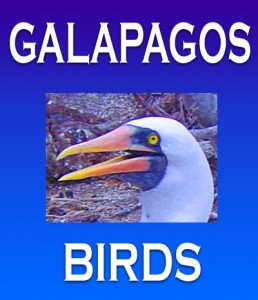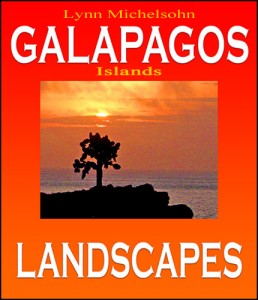Robert FitzRoy, Captain of the HMS Beagle, and Albemarle Island (also called Isla Isabela)
Today . . .
The largest of the Galapagos Islands making up over half of the archipelago’s total land area, Isabela, also called Albemarle Island, sits at the western edge of the group. A chain of six volcanoes fused together by their lava flows, it stretches from north to south across the Equator. As one of the youngest islands geologically, much of its surface is impassable due to rough volcanic terrain. Several of its volcanoes still occasionally spew lava.
Puerto Villamil, on the southeast coast, was founded in 1897 and supported a prison colony in the 1940s and 1950s (until the revolt). The larger of two towns on the island, its approximately 1500 inhabitants fish or farm coffee or fruit in the highlands. The other settlement on the island, San Tomas, a small highland farming community, is even more remote.
Only tourists looking for tranquility visit Puerto Villamil. Most of the best tourist sites are on the distant west coast of Isabela so it is rarely visited by most tours.
Five of the island’s six volcanoes support their own unique subspecies of tortoise. The Giant Tortoise Breeding Center near Puerto Villamil propagates these reptiles as well as endangered subspecies from other islands.
Galapagos Penguins and Flightless Cormorants are frequently seen in several spots along the west and southwest coasts which is also the best area in the islands to see whales and dolphins.
Volcan Alcedo in the middle of the island has the largest tortoise population in the archipelego but it was threatened by competition for limited vegetation by an even larger population of feral goats throughout the island. These were completely eradicated by 2005.
The Beagle was not the only ship to anchor in Targus Bay (as mentioned below). Countless ships have since left their names blazed on the cliffs surrounding the cove, the earliest from 1836. Evidently the Beagle crew was too busy to bother leaving graffiti. A large inland lagoon here whose salty water disappointed Darwin and the volcano that towers over it have since been named for him.
In 1835 . . .
Captain FitzRoy’s Account:
[September] 28th. Having taken on board live pigs and a quantity of vegetables [from Isla Floreana — Charles Island], we weighed and stood towards Albemarle Island.
Four small islets, the remains of volcanoes, lie near the low south-east extreme of this island, and together with Brattle Islet, are extremely useful in warning vessels of their approach to a very dangerous piece of coast.
So low are the south-eastern extremities of Albemarle Island that they are not discernible until you see the surf on the shore. A heavy swell setting towards the land, and generally light winds, add to the danger of getting near this coast; but there is anchorage in case of necessity.
Albemarle Island is a singular mass of volcanic ejections. Six volcanoes have there raised their summits from two to four thousand feet above the ocean, and from them immense quantities of lava have from time to time flowed towards the sea; so that this island, large as it is, may be literally described by saying that it consists of six huge craters, whose bases are united by their own overflowed lava.
The southern side, which is exposed to the trade wind, and completely intercepts it, with all the clouds it brings, is thickly wooded, very green, and doubtless has fresh water; but how is that water to be obtained where such a swell rolls upon the shore? The weather side of Chatham Island is partially protected from the great south-west swell of the Pacific by Hood Island, yet even there it is difficult to land.
We passed this night under easy sail, off the south-west extreme of Albemarle Island; and on the 29th we found a small cove, in which we anchored; but such a wild-looking place—with such quantities of hideous iguanas as were quite startling!
Hence I despatched Mr. Mellersh and Mr. King, to examine the depth of Elizabeth Bay, and rejoin us beyond Narborough Island [Isla Fernandina]; we then weighed, and continued our examination of this unearthly shore.
Passing a low projecting point, our eyes and imagination were engrossed by the strange wildness of the view; for in such a place Vulcan might have worked. Amidst the most confusedly heaped masses of lava, black and barren, as if hardly yet cooled, innumerable craters (or fumeroles) showed their very regular, even artificial looking heaps. It was like immense iron works, on a Cyclopian scale!
When this lava flowed from the heights it must have been stopped rather suddenly (cooled) by the water; for the lava cliffs are in some places twenty, and in others forty feet high, while close to them there is water so deep that a ship could not anchor there, even in a calm while the sea is quite smooth.
Until we rounded this point the wind was very strong, eddying round the high south-west cape; but here we were becalmed, and passed some anxious hours, till at length light variable airs carried us off-shore.
30th. This morning we passed a remarkably fine American whaler, the Science, carrying nine whale-boats! On the south-eastern height of Albemarle, smoke was seen issuing from several places near the summit, but no flame. Profiting by every breeze, we hastened towards Tagus (or Banks) Cove.
Narborough Island is exactly like a part of Albemarle—a great volcano, whose base is surrounded by an extensive field of lava: it is utterly barren and desolate. A few mangroves, on the sandy beaches near Albemarle Island, are not seen in the distance; neither are there enough of them even to diminish the dismal appearance of the island.
We entered the passage in the afternoon, and anchored in the little cove first described by Capt. Pipon, who then commanded H.M.S. Tagus. This cove is the crater of an extinct volcano, and its sides are so steep as to be almost inaccessible.*
* In 1825 H.M.S. Blonde, commanded by Lord Byron, anchored here. In her voyage (pp. 92, 93, 94) the black and the red (or brown) iguanas are described, and it is stated that a specimen of the black kind was brought to England from Mexico. Lord Byron saw a volcano burning on Nar-borough Island.
1st October. Our first object was to find water: none could be got in the cove, but at a short distance from it a few holes were found, out of which a bottle might be filled in an hour.
Around this scanty spring draining continually through the rock, all the little birds of the island appeared to be collected, a pretty clear indication of there being then no other fresh-water within their reach: yet during the rainy season there must be considerable streams, judging by gullies which are worn in the rock.
All the heights hereabouts, and the sides of the craters, are composed of sandstone that looks like fine sandy mud half baked; but the low grounds are lava. The crater in which we anchored gave me the idea of its having been a mud volcano.
The climate is very different from that of the Windward Islands; for wind clouds and rain appear to be obstructed in their northward passage, by the heights on the southern part of this island. The heat in here are greater than in other parts of the archipelago, and the land is more sterile.
Numbers of another sort of iguana were seen for the first time, and many were killed and eaten. In size and shape they resemble the black kind, but their colour is a dirty orange red, inclining to reddish brown above and yellow beneath. These reptiles burrow in the earth like rabbits, and are not bad eating. Of the black kind a vast number run about the rocks near the sea, living either upon fish or sea-weed.
As we went afterwards in a boat along the ragged irregular shore, we saw numbers of turtle. There are small sandy beaches here and there, to which these animals approach in the evenings: when, as it gets dark, they land and usually lie on the beach during the night, even if it is not the season in which they seek a place for their eggs.
From a height near Tagus Cove, dismal in-deed was the view, yet deeply interesting. To see such an extent of country overwhelmed by lava, to think of the possible effects of the seven dormant volcanoes then in sight, and to reflect that at some one period all was activity and dreadful combustion where we then witnessed only silent desolation, was very impressive.
2d October. We passed this day and the following night in Banks Bay.
On the 3d, Mr. Mellersh returned, having examined Elizabeth Bay and the western shore of Narborough Island. We then went round the north-west end of Albemarle Island, and passed the night under sail off the north extreme.
At daybreak, on the 4th, we made all sail towards Abingdon Island [Isla Pinta], which is small, rather high, and tolerably covered with stunted wood; we did not maintain a position even near where I wished to pass the night, but were carried about forty miles away, dead to lee-ward, during only a few hours of light wind. The current hereabouts runs between one and four knots an hour to the north-westward, yet the depth of the water is unfathomable by ordinary means: excepting for which it is like a vast river in the sea.
5th. While working to windward, endeavoring to regain our lost ground, we saw Bindloes Island [Isla Marchena]: and passed through many ripplings, some of them dangerous for a boat; these were northward, and rather eastward of Abington.
During the 6th, other indications of a strong current were noticed, besides the ripplings such as these, which, in very deep water, and in the open sea, are difficult to explain: sometimes at night, while all around was smooth and tranquil—a short, deep plunge suddenly startled every one: but in a minute afterwards the ship was again quiet.
We continued to work to the southward in order to reach James Island, and meet Lieutenant Sulivan.
7th. While working to windward we saw Towers Island [Isla Genovesa], which is different in appearance from all the other islands of this archipelago, being low and flat. We passed it about noon, and Bindloes at sunset. The latter has an irregular hilly surface, partially wooded, but like the rest is a mass of lava, and indurated sandy mud.*
* Of course much of the information given in these pages was collected by the officers.
(This selection comes from Lynn Michelsohn’s forthcoming book, In the Galapagos Islands with Charles Darwin.)

Available from these booksellers

Available from these booksellers
You might also enjoy these books by Lynn Michelsohn that include Herman Melville’s descriptions of the Galpagos Islands and Moses Michelsohn’s nature photographs
Copyright 2004-2014 Cleanan Press, Inc.
